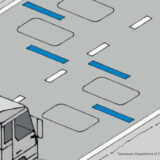OOIDA asks FMCSA to give drivers more control with the hours of service
Providing more flexibility to professional drivers will benefit highway safety, the Owner-Operator Independent Drivers Association wrote in its formal comments regarding the FMCSA’s advance notice of proposed rulemaking regarding possible changes to hours-of-service regulations.
“The current HOS regulations that dictate a truck driver’s work schedule are overly complex, provide virtually no flexibility and in no way reflect the physical capabilities or limitations of individual drivers,” the Association wrote in comments signed by OOIDA President Todd Spencer. “They effectively force drivers to be on the road when they are tired or fatigued, during busy travel times such as morning and afternoon rush hour, during adverse weather and road conditions, or when they simply are not feeling well. The unyielding 14-hour clock pressures truckers to drive faster when they’re running short on available time.”
FMCSA published the advance notice of proposed rulemaking on Aug 23, asking for comments and data about possible HOS changes regarding short-haul operations, adverse driving conditions, the 30-minute break, and split-sleeper berth.
OOIDA was out in front of the call for change to hours of service as the Association submitted a petition to FMCSA on Feb. 13. The petition asked for regulations to allow drivers to take a rest break once per 14-hour duty period for three consecutive hours if the driver is off-duty. OOIDA also asked for the agency to eliminate the 30-minute rest break requirement.
The Association pointed out that FMCSA’s previous changes to hours of service didn’t improve highway safety. OOIDA also said the recent “flawed rollout of the ELD mandate” highlighted the rigidity of the hours-of-service rules.
“Since the July 2013 HOS changes, the total number of crashes involving large trucks, as well as fatal crashes involving large trucks, has increased by 45.4 and 8.7 percent, respectively,” OOIDA wrote. “Today’s truckers have never faced more regulations or greater enforcement and compliance with those regulations. Yet crash numbers are going in the wrong direction. A solution to reverse this trend is to give drivers more control over their own schedules.”
The OOIDA Foundation, the Association’s research and education arm, conducted an online survey of truck drivers to help answer the questions FMCSA proposed in the advance notice of proposed rulemaking.
FMCSA asked stakeholders to comment on short-haul operations, adverse driving conditions, the current 30-minute break, and split-sleeper berth time.
Short-haul operations
OOIDA said it supports extending the 12-hour short-haul exception to 14 hours.
“Extending the short-haul exception would allow short-haul drivers additional flexibility to complete their trips and return home if they encounter unforeseen delays during their work schedules,” OOIDA wrote. “Additionally, a 14-hour short haul exception would mirror the 14-hour window in place for long-haul drivers.”
Adverse driving conditions
Based on the OOIDA Foundation survey, 85 percent of respondents said there is not adequate flexibility in the existing adverse driving conditions rule.
“OOIDA members have complained of law enforcement officers telling them they should have known about adverse conditions ahead of time,” the Association wrote. “For example, a driver was put out of service for an HOS violation when hitting an unusual snow storm for the time of year. The officer stated that when traveling over those mountains, ‘You should always be ready for a snow storm.’ There is also no specific ELD status for the exception, which discourages drivers from utilizing the rule. Lastly, in some cases, drivers explained that their employers do not allow them to use the exception at all. One even received a violation letter from the motor carrier they were leased to for utilizing it.
“Expanding the current definition of the rule would improve its usefulness and increase highway safety.”
30-minute break
OOIDA called the 30-minute rest break “needless and unfounded.”
“There are many operational situations where the 30-minute rest break requires drivers to stop when they simply do not need to, making the mandate either impractical or unsafe,” OOIDA wrote. “The rule was implemented without any evidence that the break would reduce crashes, and we have not seen any statistics proving otherwise since.”
Split-sleeper berth
The Association supports adding flexibility into the sleeper berth provision.
“It makes far more sense to allow alert drivers to leave the sleeper berth and begin to drive with the option to obtain additional rest later in the day, rather than forcing drivers to idly wait for their driving clock to begin again, which can essentially cause a driver to drive when tired and rest when alert,” OOIDA wrote.
OOIDA’s petition is focused on providing professional drivers more flexibility within the hours of service.
“Limiting the flexibility of a driver from choosing when they should stop the truck to attain rest in counterproductive to highway safety,” the Association wrote. “The 14-hour clock looms foremost in the thoughts of the driver when considering whether to stop for a break, or to continue driving. If the driver has only limited hours left in the 14-hour window, the choice to stop for a break is likely to be ignored by the impending expiration of the 14-hour clock.”
OOIDA’s proposal to allow drivers to stop the clock for up to three hours would give truckers the opportunity to take a nap, wait for traffic or a storm to subside, or refresh themselves by having sufficient time to eat a healthy meal.
The Association also recommended expanding the 100 air-mile radius exception to 150 air-miles and having FMCSA take further action to decrease detention times across the trucking industry.
The comment period regarding FMCSA’s advance notice of proposed rulemaking has been extended until Oct. 10. Public listening sessions are set for Sept. 28 at the Guilty By Association Truck Show in Joplin, Mo.; Oct. 2 in Orlando, Fla.; and Oct. 10 in Washington, D.C.
Comments can be made here.









